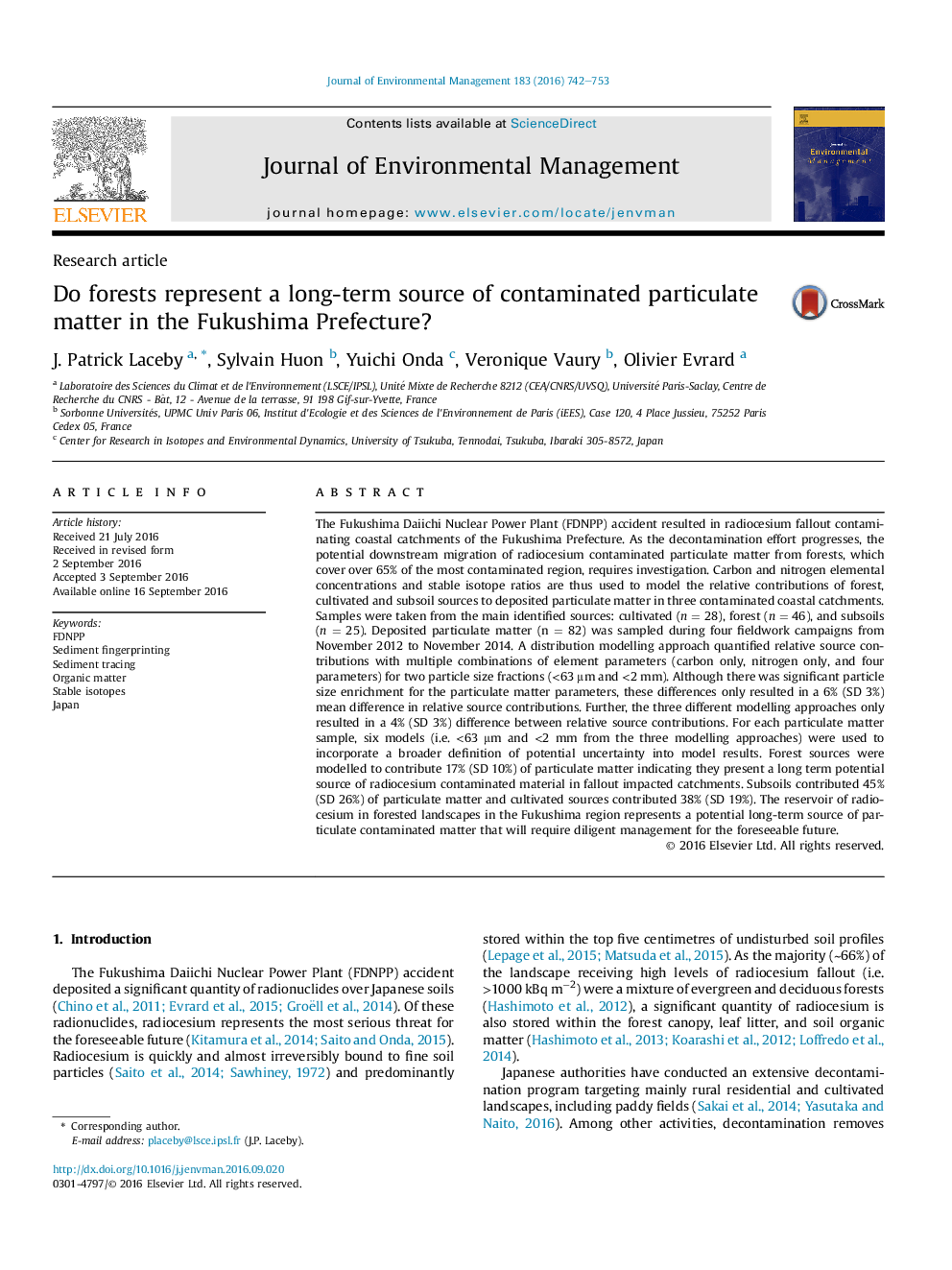| کد مقاله | کد نشریه | سال انتشار | مقاله انگلیسی | نسخه تمام متن |
|---|---|---|---|---|
| 5117211 | 1378118 | 2016 | 12 صفحه PDF | دانلود رایگان |
- The potential of forests to contribute radiocesium downstream was investigated.
- Forests received â¼66% of the terrestrial fallout from the FDNPP accident.
- Contributions to particulate matter were determined with sediment fingerprinting.
- Forest source contributed 17%, subsoil sources 45% and cultivated sources 38%.
- Forests are both a long-term reservoir and source of radiocesium contamination.
The Fukushima Daiichi Nuclear Power Plant (FDNPP) accident resulted in radiocesium fallout contaminating coastal catchments of the Fukushima Prefecture. As the decontamination effort progresses, the potential downstream migration of radiocesium contaminated particulate matter from forests, which cover over 65% of the most contaminated region, requires investigation. Carbon and nitrogen elemental concentrations and stable isotope ratios are thus used to model the relative contributions of forest, cultivated and subsoil sources to deposited particulate matter in three contaminated coastal catchments. Samples were taken from the main identified sources: cultivated (n = 28), forest (n = 46), and subsoils (n = 25). Deposited particulate matter (n = 82) was sampled during four fieldwork campaigns from November 2012 to November 2014. A distribution modelling approach quantified relative source contributions with multiple combinations of element parameters (carbon only, nitrogen only, and four parameters) for two particle size fractions (<63 μm and <2 mm). Although there was significant particle size enrichment for the particulate matter parameters, these differences only resulted in a 6% (SD 3%) mean difference in relative source contributions. Further, the three different modelling approaches only resulted in a 4% (SD 3%) difference between relative source contributions. For each particulate matter sample, six models (i.e. <63 μm and <2 mm from the three modelling approaches) were used to incorporate a broader definition of potential uncertainty into model results. Forest sources were modelled to contribute 17% (SD 10%) of particulate matter indicating they present a long term potential source of radiocesium contaminated material in fallout impacted catchments. Subsoils contributed 45% (SD 26%) of particulate matter and cultivated sources contributed 38% (SD 19%). The reservoir of radiocesium in forested landscapes in the Fukushima region represents a potential long-term source of particulate contaminated matter that will require diligent management for the foreseeable future.
292
Journal: Journal of Environmental Management - Volume 183, Part 3, 1 December 2016, Pages 742-753
